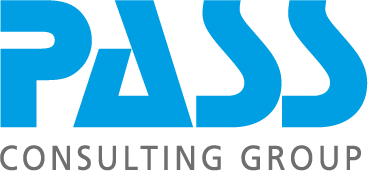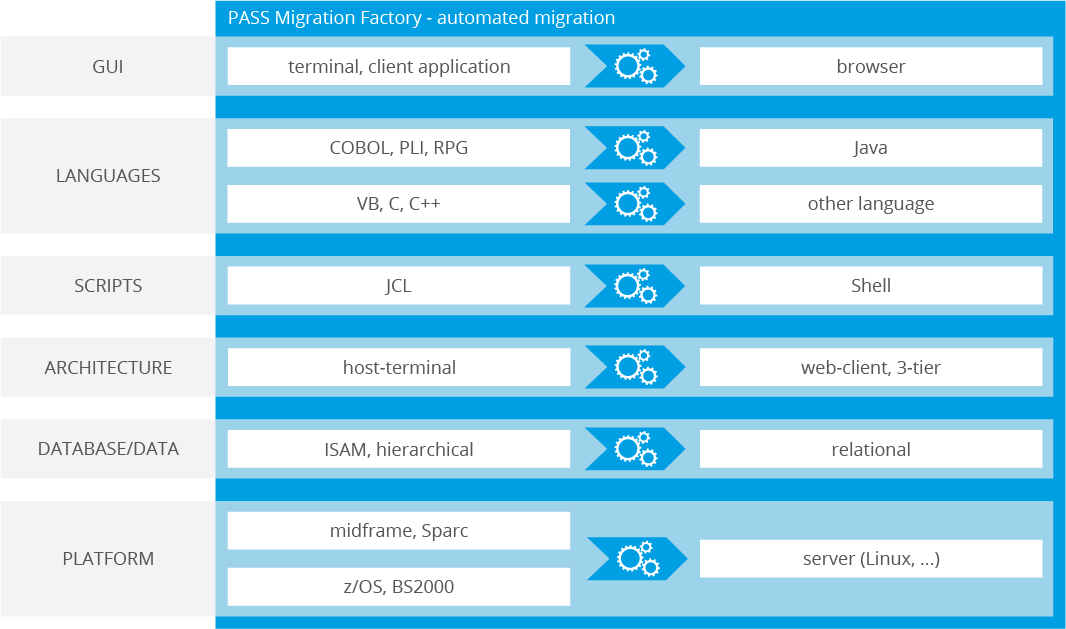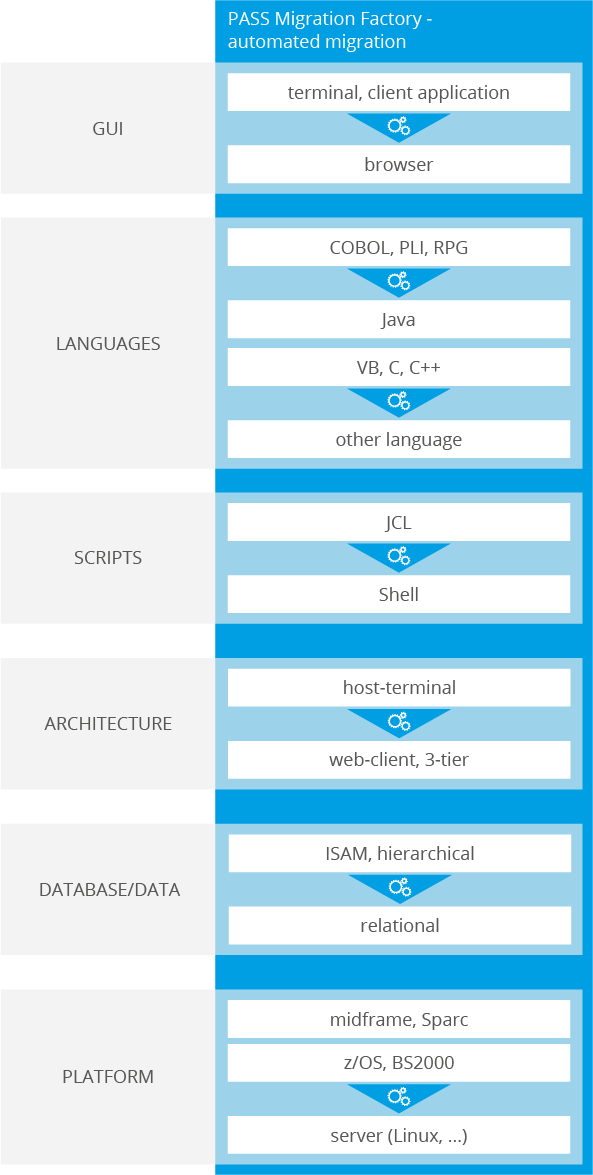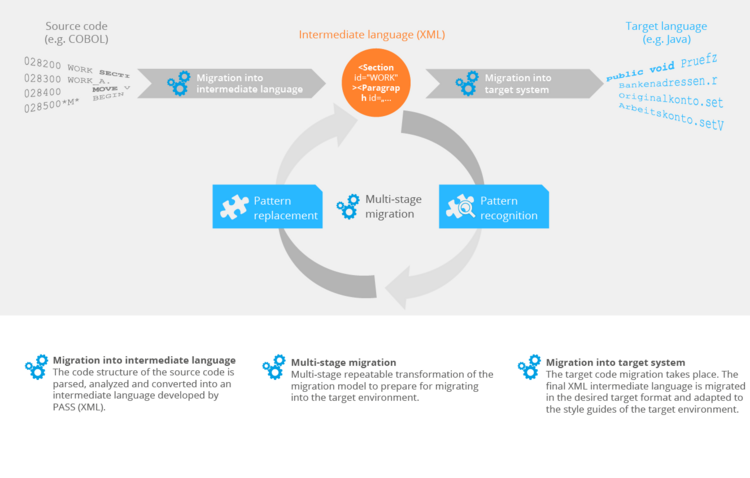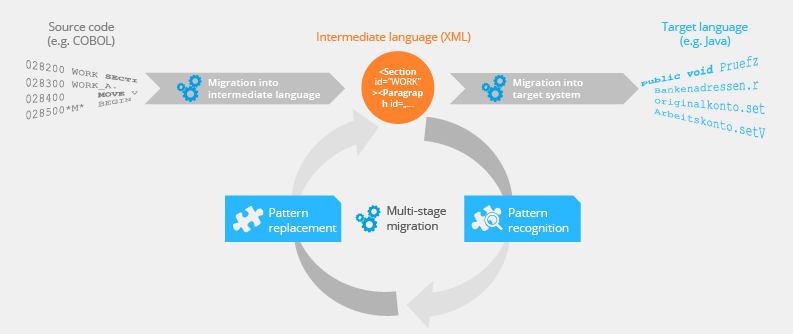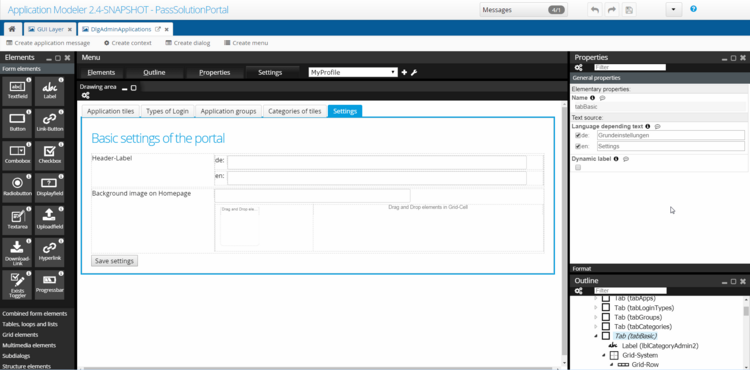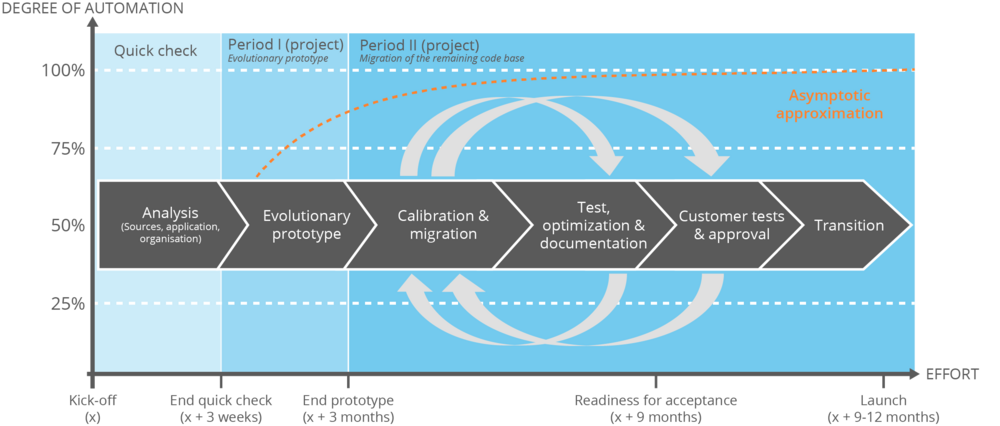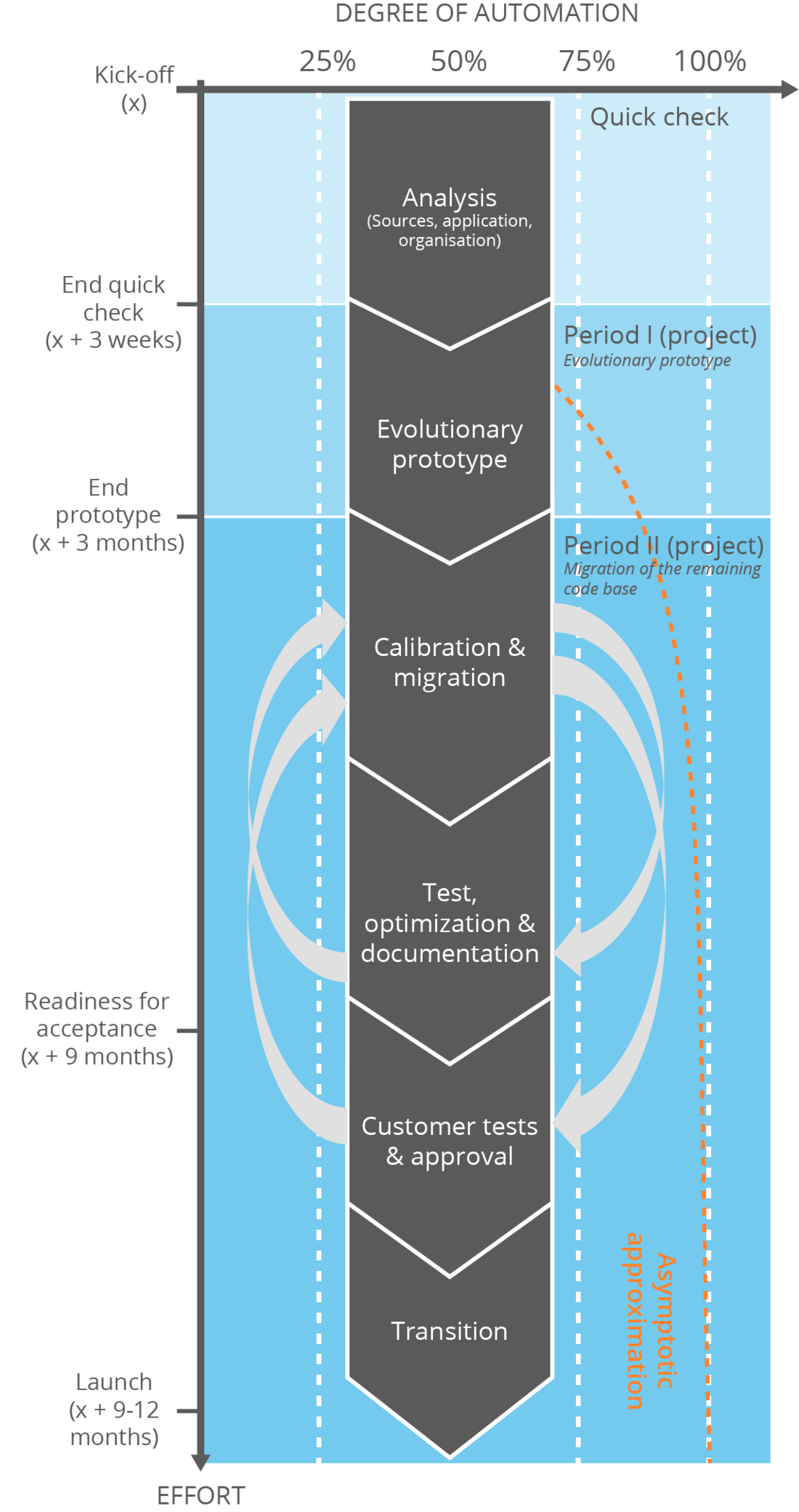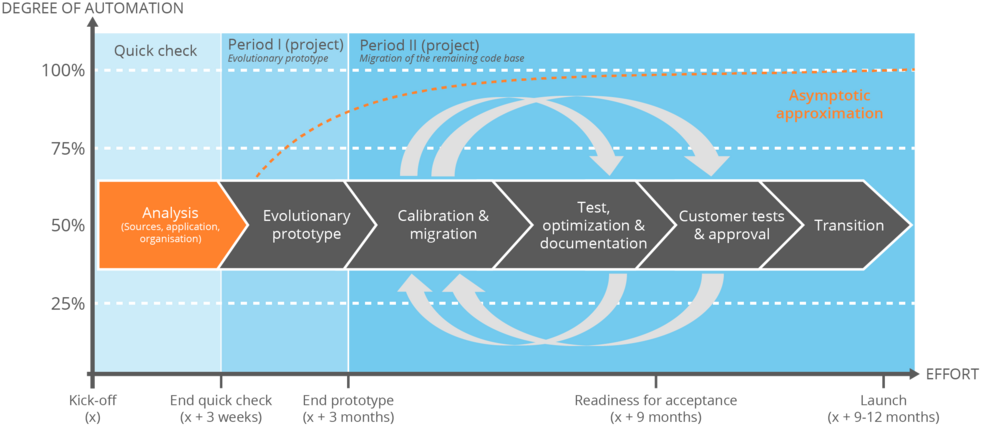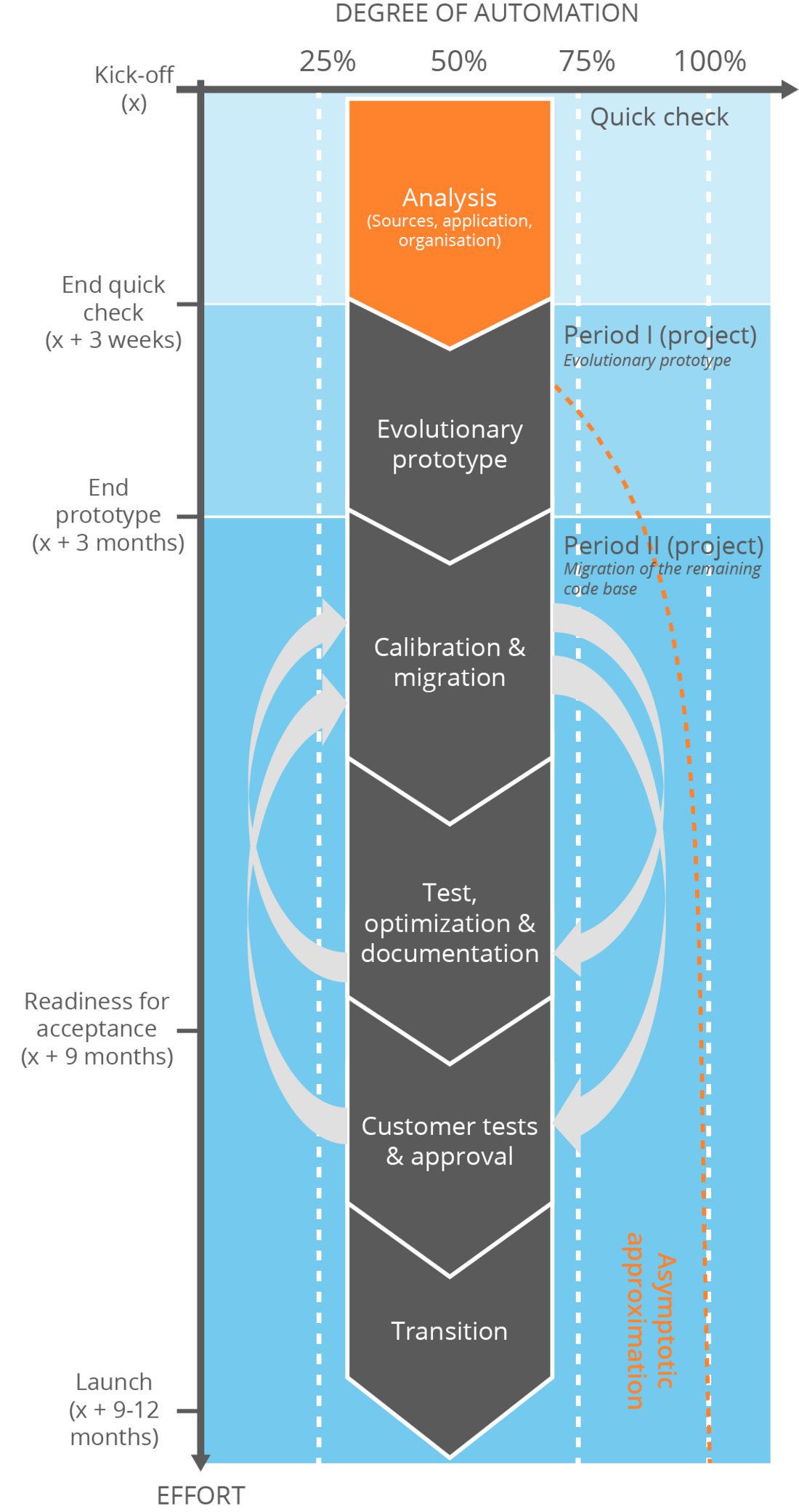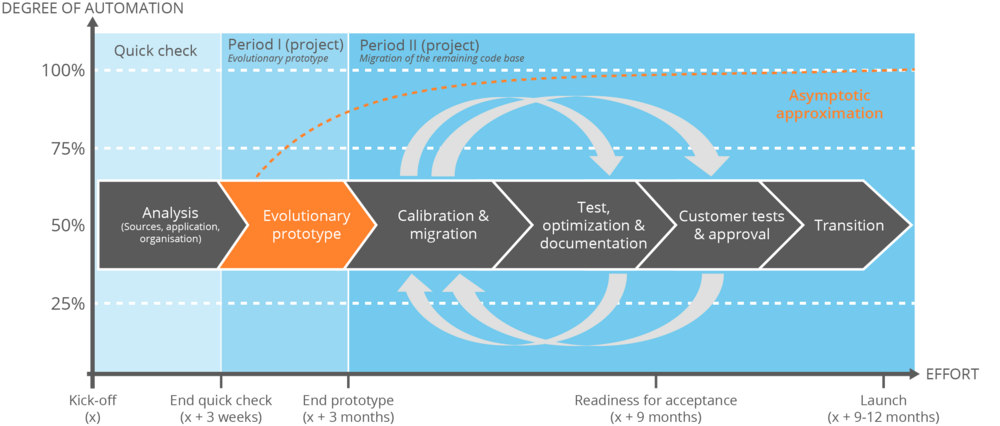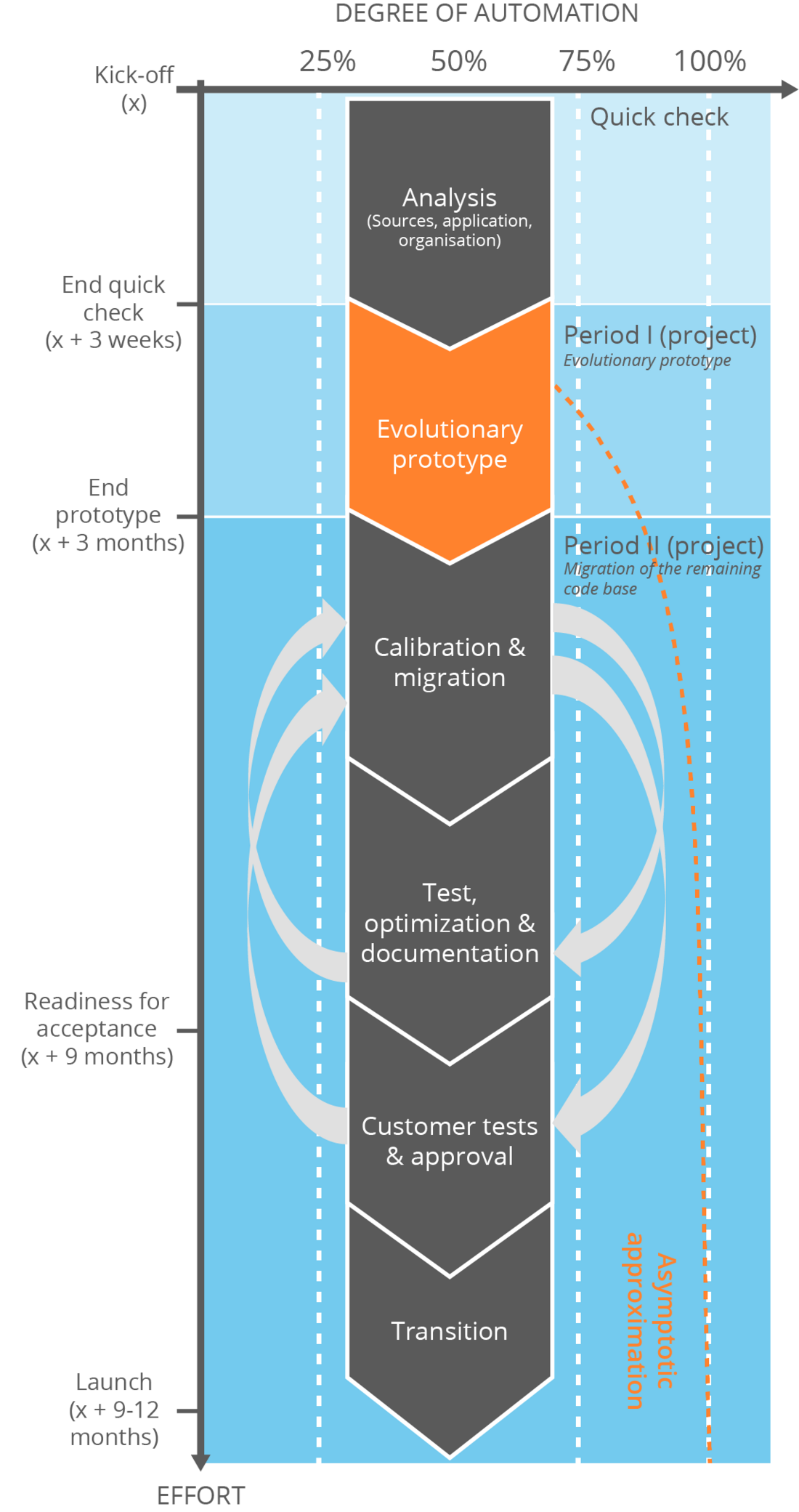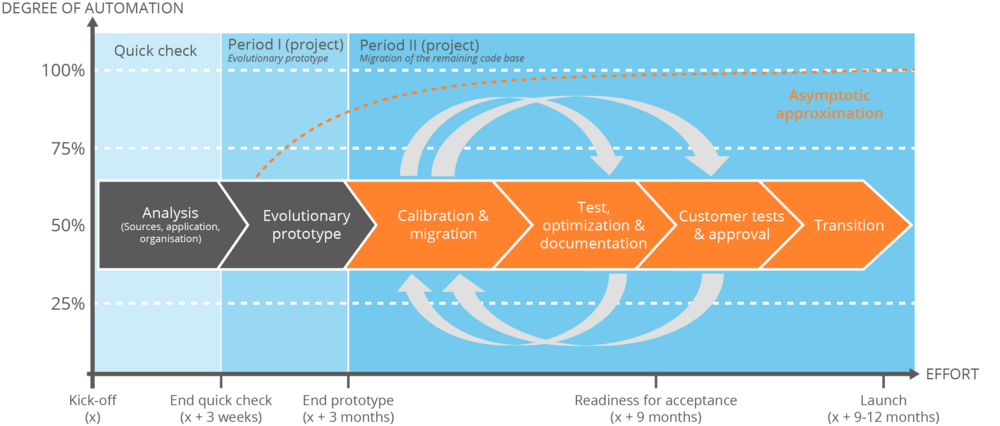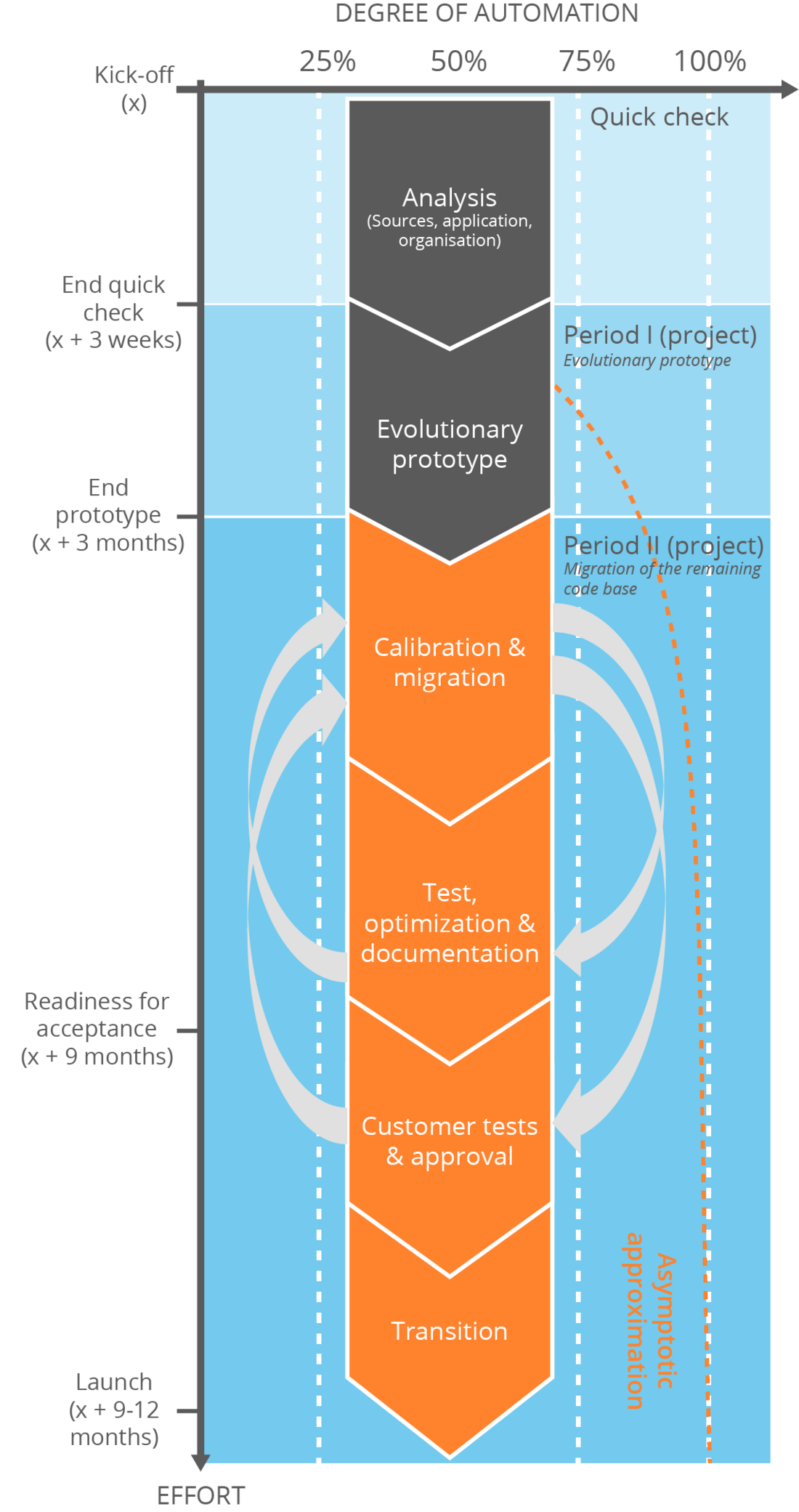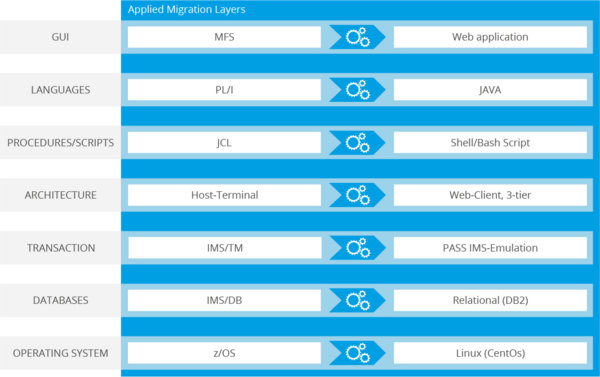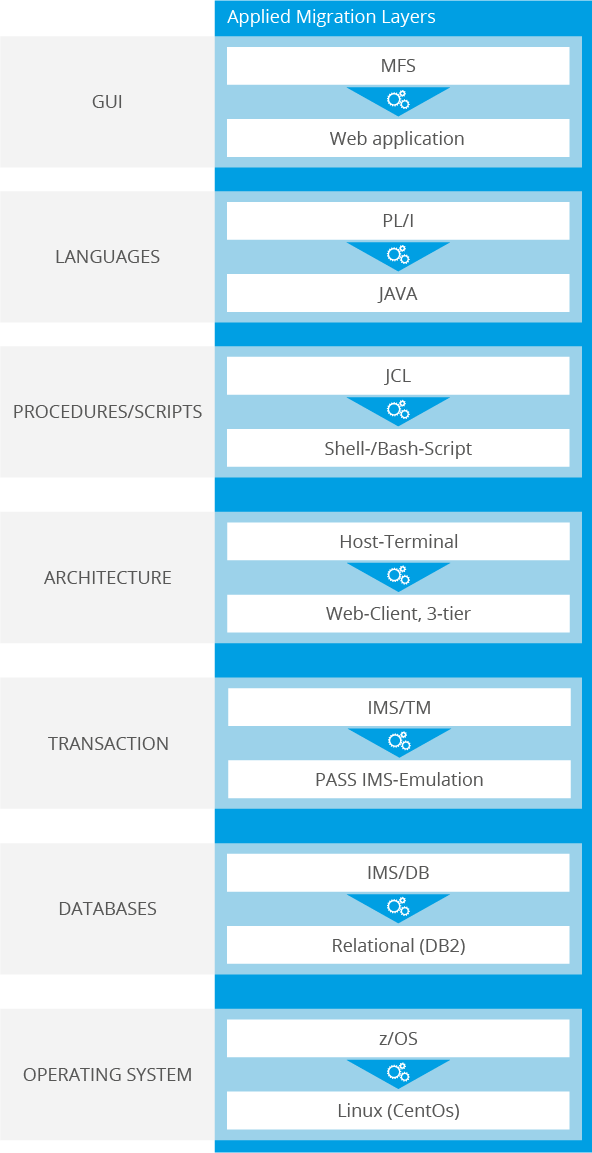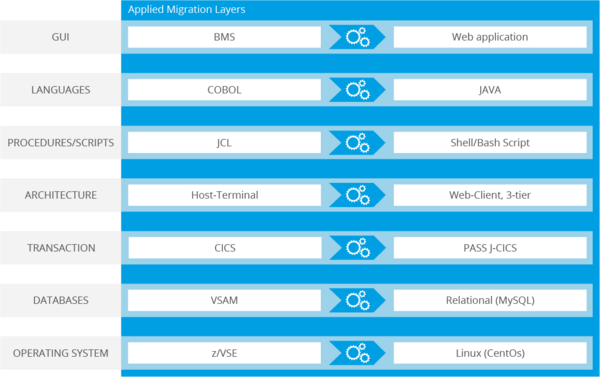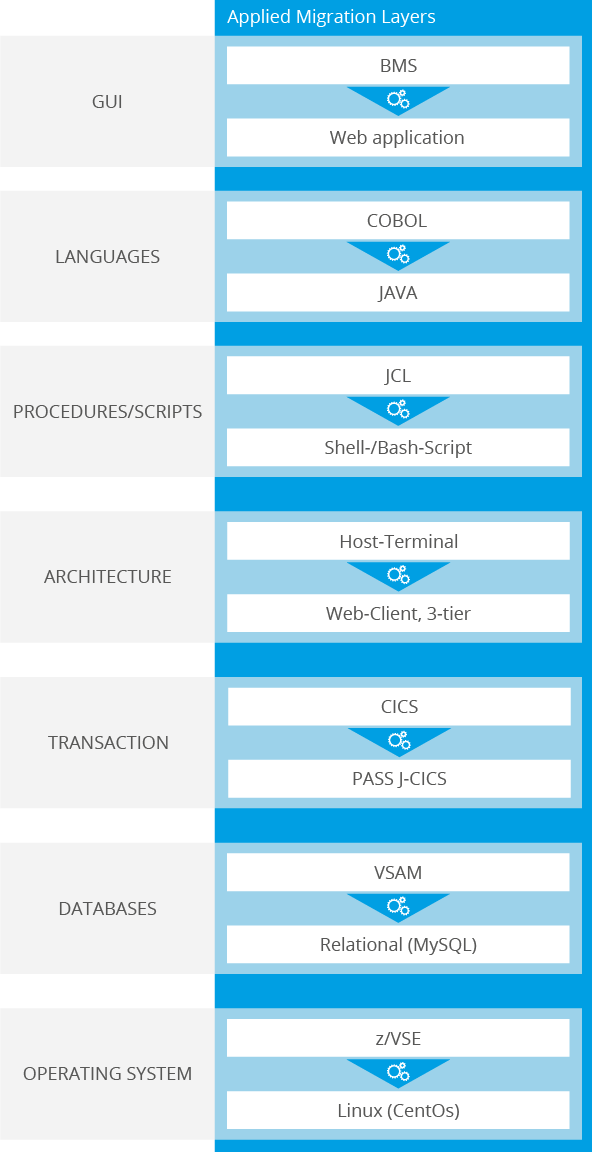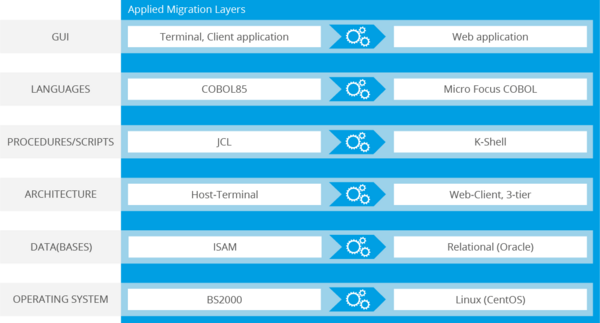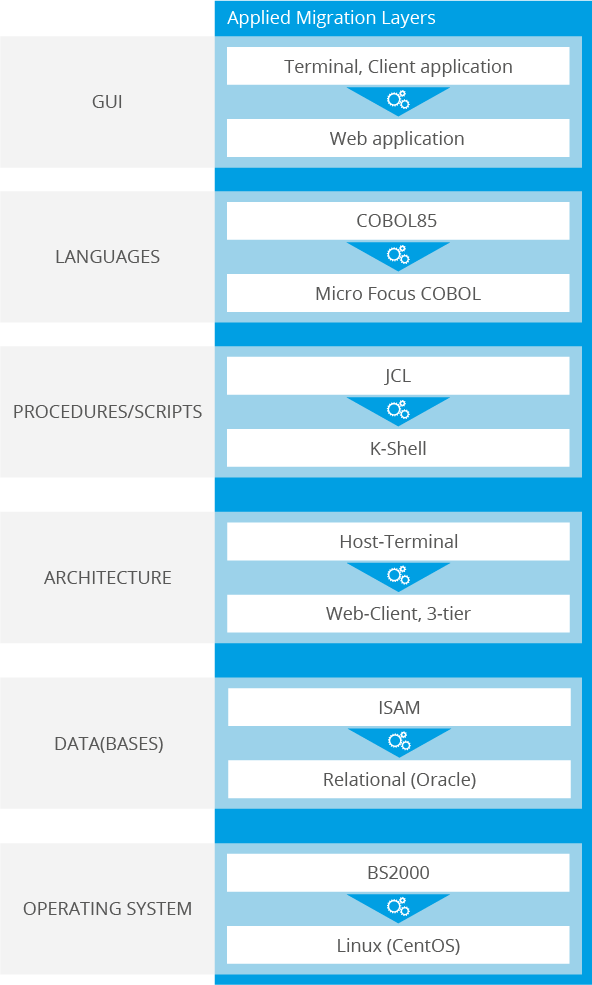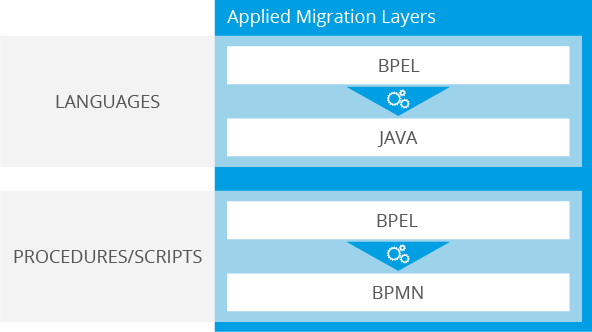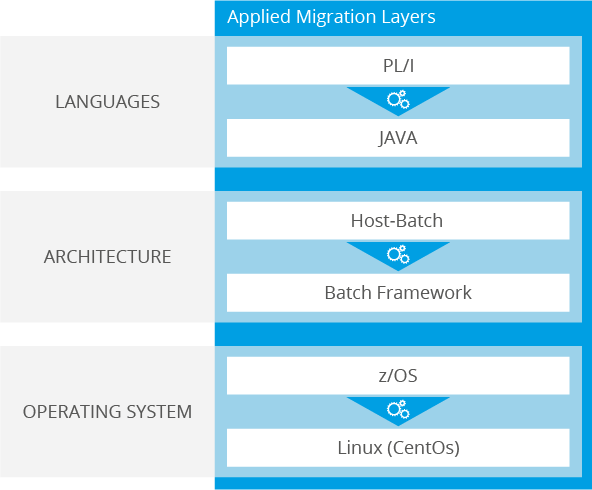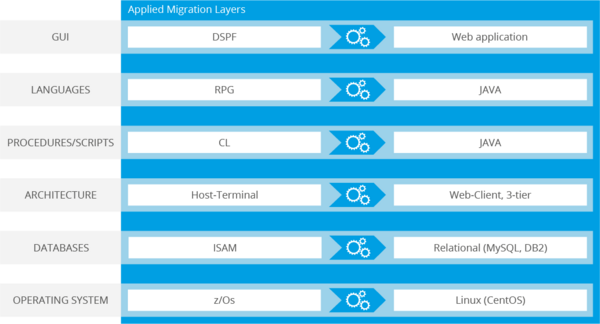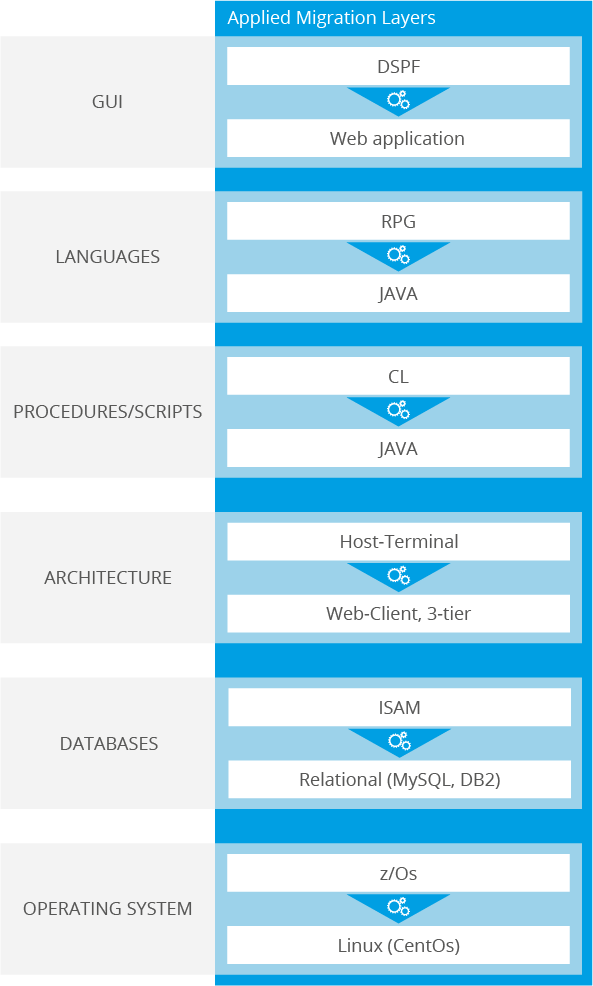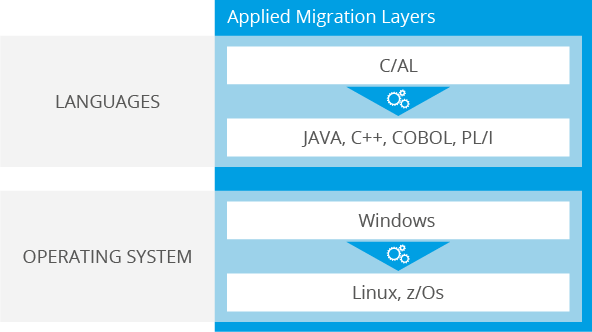Software Modernization of Legacy Systems
Software modernization on all levels
The end is looming for costly old platforms and for very good reasons: The number of experts with insight into legacy systems is constantly declining. IT budgets are strained by hefty license and maintenance costs. But most of all, the company is downright cut off from technical advancement.
Software modernization and the migration to new platforms are high on the list of priorities for IT divisions. But companies are finding the shift from old systems to new platforms anything but easy, regardless of the related perspectives on flexibility and simplification. By migrating the code automatically, we make legacy modernization projects far less menacing. Thanks to our Cross-Platform Technology cpTech, an automatic software modernization of legacy systems to modern platforms such as Linux, Java, Web etc. is generally 100% possible.
Our method of the software modernization: How our fully automated legacy modernization works
![]() Migration into intermediate language: The code structure of the source code is parsed, analyzed and converted into an intermediate language developed by PASS (XML).
Migration into intermediate language: The code structure of the source code is parsed, analyzed and converted into an intermediate language developed by PASS (XML).
![]() Multi-stage migration: Multi-stage repeatable transformation of the migration model to prepare for migrating into the target environment.
Multi-stage migration: Multi-stage repeatable transformation of the migration model to prepare for migrating into the target environment.
![]() Migration into target system: The target code migration takes place. The final XML intermediate language is migrated in the desired target format and adapted to the style guides of the target environment.
Migration into target system: The target code migration takes place. The final XML intermediate language is migrated in the desired target format and adapted to the style guides of the target environment.

The interface migration is fully automated and adapted to your needs – for this we use the latest web technologies (JSF 2, Angular with TypeScript, HTML5). We will advise you which solution fits best for your application scenario.
In practice, the requirements are quite different: They vary from application scenarios in which the look & feel should correspond to that of the legacy application, up to scenarios, in which a migration to a single interface is requested, that supports the opportunities of modern GUI elements.
Another highlight of our modernization technology is the PASS GUI editor, which enables cross-language customizing and extension of the migrated interfaces without adapting the source code.

The business logic is migrated automatically over several production stages, based on mapping rules. First of all, the source code of the source environment is transformed into the PASS Intermediate Language Specification (PILS). From this, the transformation into the target language and architecture is carried out automatically over several consecutive steps. At this stage, individual adjustments in customizing can be made, e.g. regarding the look & feel of the source code as well as the implementation into your application architecture by integrating the generated result directly into your runtime environment.
The procedure we propose contains a clarification of the expected result in advance. We are willing to show you an exemplary language migration in advance.

The requirements for the target environment of a script migration are different - accordingly we offer several scenarios:
- Scripts of the source platform (e.g. JCL) are migrated into the shell language of the target environment (on Linux e.g. Bash or Korn Shell).
- Scripts of the source platform are migrated into (BPMN) processes of a process engine or job scheduling system. The flow paths of the scripts become very transparent when displayed in BPMN, for example.
- Scripts are migrated into sequential programs, e.g. in Java.
During the “Quick Check” phase we will discuss the most suitable solution option with you
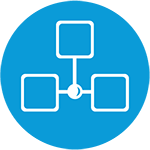
In most cases, modernization projects are accompanied by a change in architecture. We can support our customers with numerous architecture migration templates. This includes e.g. migration of
- a rich client or terminal emulation to a browser client,
- business logic into a 3-tier architecture and
- transaction systems to an application server that supports transaction management.
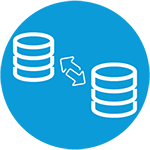
Mostly any software contains a data layer. It is often necessary to upgrade it to a different technology within a modernization project, either due to high license costs, insufficient staff resources, a missing reporting function or the use of a replicated mirror database. The reasons for that can be very different.
We offer you an automated conversion of your data with the help of cpTech. It achieves transparent, reliable and cost-efficient results. We also support migrations from file formats to relational formats (e.g. VSAM or hierarchical databases to relational databases, character set conversions, etc.).

In addition to the migration of individual technologies, there may also be the goal to operate the application on another platform, for example in order to reduce operating costs.
Talk to us about your project and we will have our experts develop a possible scenario based on your requirements. Among the services we support is the migration from a host to a Linux platform.
Minimal frozen zone
Further development can continue even while the legacy software migration project is underway.
Integrated customization
Once migrated, the target code can easily be configured and aligned in accordance with the customer’s style guide.
Serviceable source code
The migrated source code is fully serviceable, thus nothing stands in the way of further development.

USERS AND THE TECHNICAL TEAM
- Quality gains thanks to higher performance (process optimization) and state-of-the-art technologies (GUI etc.)
- Efficiency boost (particularly in product development) due to a shorter time-to-market

IT MANAGERS AND DEPARTMENT HEADS
- Cost-cutting
- Reduced maintenance required
- Focus on optimization
- Flexibility: business requirements implemented more swiftly
- Quality boost due to higher process security
- Future-oriented technology

DECISION-MAKERS OR MANAGEMENT
- Cost reduction (maintenance, investment and operation)
- Increased efficiency thanks to a shorter time-to-market
- Flexibility for your IT strategy
- Future-oriented technology
Project phases of the software modernization
We are technology specialists in the field of automated legacy modernization. In the course of numerous software modernization projects we developed our Cross-Platform Technology (cpTech), making the switch to new and cost-efficient platforms possible. We calibrate our robots to meet project-specific requirements, generally allowing us to reach automation ratios up to 100%.
The projects often take place in two periods, with a preceding quick check, which verifies the basic feasibility. The time period, even for extensive modernization projects, has always been within a year.
In advance: Quick check (optional)
Analysis of your initial situation
In a first step, the existing sources and documentation of the legacy system are reviewed. Source types, (third-party) components and interfaces are identified and an appropriate modernization concept is defined. The execution of a risk analysis and the definition of the project scope are also part of the quick check.
The objective target is to verify the basic feasibility of the migration project.
Phase 1: The evolutionary prototype
Safeguarding your investment
Objectives:
- Verify the feasibility of the desired legacy software modernization by evolutionary prototypes
- Gain a high degree of reliability after a short time by choosing a representative use case
- Set out the entire expense and timeline of the project in detail
As part of the proof of concept (feasibility study), a prototype legacy system migration is performed in order to gain a representative outline of the applications. Even at this early stage, we employ all steps of the Migration Factory process to the selected use case, including the initial calibration of the robots to the project requirements. Non-cognitive points can be excluded from the evolutionary prototype.
Deliverables:
- Evolutionary prototype
- Final determination of the target architecture (hardware, operating system, programming language and more)
- Mappings on architectural, design and command levels
- Specification of interfaces and dependencies
- Estimation of the expected degree of automation
Phase 2: The migration project
The four steps of automated software modernization of legacy systems
The migration robots specified in the evolutionary prototype are used for the entire modernization project.
With the target of a degree of automation close to 100%, the robots are continuously calibrated until the result is completely migrated in the target language.
The process steps calibration and test are used iteratively.
At the same time, the target architecture is set up in which the migrated code is embedded directly.
After completion of the automated software modernization of legacy systems, including confirmation of its correctness, the migrated system is committed to the customer's approval process and is set productive.
100% automated migration: Don’t believe us?
Some people are skeptical when it comes to a fully automated legacy software migration. Indeed special cases do exist, where transformation without manual intervention is not possible. But we have developed a solution for these cases based on intelligent adaptation of the production line.
Many successful software modernization projects prove that our Migration Factory is based on a sophisticated concept, in both technological and organizational terms:
The Migration Factory is the outcome of more than 30 years of IT projects
It boasts an unrivaled degree of automation
The configuration is adapted to each individual project situation
Automation guarantees security and risk minimization
The Migration Factory is cost-effective, error-free and flexible
Let us prove the efficiency of our strategy to you!
By the way: we credit the costs of a preliminary proof of concept for your software modernization project to the project costs when you commission us.

Migration of a legacy system from PL/I to Java
Project duration: 4 months
Degree of automation: 100%
LVM Insurance commissioned us with a prototypical migration of a part of the accident business. The aim was to convert the PL/I source files fully automatically to Java.
Challenge: The special feature was that the HOST should remain in place. It should be investigated whether there is a possibility that the PASS IMS emulation also communicates with the HOST IMS system.
Services:
- Language migration from PL/I to Java
- Mask migration from MFS to Angular
- IMS emulation must also be able to communicate with HOST
- Language migration from JCL to Bourne Shell
- Data Migration from IMS/DB to MySQL
- Conversion of Transaction Monitor IMS/TM to PASS IMS Emulation
Result: The prototype was completed successfully.

Migration of a legacy system from COBOL to Java
Project duration: 4 months
Degree of automation: 100%
The task was the migration of a central accounting system, 100% automated, from COBOL to Java: PASS demonstrated that this is possible by means of a proof of concept.
Services:
- Replacement of the z/VSE platform with Linux
- Language migration from COBOL85 to Java
- Language migration from JCL to Bourne Shell
- Data migration from VSAM to SQL
Result: Within the framework of an evolutionary prototype, we demonstrated the feasibility of a migration to a Linux/Java Application Server environment by means of an automated migration procedure. Representative use cases from the batch and online areas were selected and automatically ported to the Java target environment with the PASS Migration Factory. The migration result was evaluated based on the criteria of correctness of implementation, maintainability, readability and performance.
The evolutionary prototype fully met the criteria and confirmed to the customer the feasibility of an automated migration approach.
"In order to secure the future viability of the core component, we want to replace the host-based components of the ABRE application with a modern Java and web architecture. After weighing up the effort, risk and costs, PASS convinced us with its Migration Factory and we commissioned a Proof of Concept.
Andre Schmidt, Project Manager, Ista International

Combined language and architecture migration of a complex settlement application
Project duration: 7 months
Degree of automation: 100%
Our customer requested the Migration of a COBOL application from a BS2000 platform towards a MicroFocus COBOL web application on Linux.
Services:
- Architecture Migration from BS2000/Terminal Emulation to Linux/Web Application
- Language migration from COBOL85/JCL to MicroFocus COBOL-/Shellscript
- Data migration of application data (ISAM files)
- Numerous optimizations (SSL encryption, improved response behavior, increased robustness through generative additions to validations)
Result:
- Savings in operating and maintenance costs of more than one million euros per year
- Improved performance
- Development technology revised: Eclipse, context sensitive editor, graphical documentation, impact analysis
- Test robot
- Uniform production platform
- Improved documentation
* Some of our customers prefer not to publish their projects for strategic reasons. If you have any specific questions about the project, please contact us – we will be happy to put you in touch.

Migration of the Process Engine Oracle BPEL to Open Source Activiti
Project duration: 1 year (incl. preliminary study)
Degree of automation: 100%
The task was the migration of their order management from a proprietary process engine (Oracle BPEL) to an open source solution (Activiti) at a fixed price. The objective was to keep the performance and load values of the legacy application at a minimum – ideally an increase of at least 10% – while at the same time reducing costs and simplifying further development.
Challenges:
The complex middleware consisted of many processes that placed high demands on availability and performance:
- 55 BPEL services (from order acquisition, conclusion and modification as well as product, customer and contract management)
- 24 backend systems to be connected
- 60 orchestrated backend services
- 3 million calls/day with up to max. 6 million transactions/day
- More than 12,000 process activities
Services:
- Implementation of the PASS study Open Source, in which Activiti was identified as target technology compared to other products. The solution was convincing from a functional point of view, in terms of runtime behavior, resource requirements and because it is used in the market by many companies.
- Project stages: Concept development, solution analysis, migration and implementation support through us.
- Migration to Activiti within half a year using PASS Cross Platform Technology (cpTech) with an automated migration share of more than 95%.
Result:
- Significant reduction of license costs
- IT infrastructure savings by reducing hardware by 50%.
- Elimination of outsourcing costs due to independent operation and further development of the Java-based system
- Reduction of complexity (before: 12,000 process nodes, after: 4000 process nodes)
- Performance increase by 50%, in some cases up to 100%
- ROI of less than one year
* Some of our customers prefer not to publish their projects for strategic reasons. If you have any specific questions about the project, please contact us – we will be happy to put you in touch.

Migration of a legacy system from PL/I to Java
Project duration: 4.5 months
Degree of automation: 100%
Replacement of PL/I-based systems by Java-based systems as part of the KfW IT Strategy 2020 with the aim of identifying a suitable methodology for automated migration (requirement: 95%).
Result: 100% automated migration with maintainable Java code, taking into account the KfW architecture model.
"With this pilot project KfW has gained security and new degrees of freedom with regard to the IT Strategy 2020. We now know that a 100 percent automated migration can be achieved, using the PASS Migration Factory. The migration result is maintainable and can be used very well for further development. The requirements for code quality and performance are also fully met."
Volker Scheringer, Director, IT MIG - IT Strategy 2020 Migration at KfW Banking Group

Migration of all applications under the transaction monitor IMS/DC to CICS
Project duration: 9 months
Degree of automation: 100%
R+V Insurance has invited external tenders for the changeover for the subject areas "Reinsurance" and "Life". The fact that only one transaction monitor is used from now on should reduce the operational complexity. In addition, the changeover should significantly reduce licensing costs.
Challenges:
- All masks should look the same under CICS as under IMS/DC
- The performance should not suffer any losses
- The business logic of the programs should remain unchanged
- The changeover had to be completed on a specified date
Result: We have won the tender and exceeded the requirements as well as the objectives of R+V.
Migration of a Legacy System from RPG to JAVA
Project duration: 1 year
Degree of automation: 100%
The origin of the PASS core banking software was migrated entirely automatically.
Challenge: The requirement was that development in RPG should remain possible. The PASS Migration Factory should always be able to migrate the new RPG code.
Services:
- Language migration from RPG/RPG ILE to Java
- Mask Migration from DSPF Files to a JSF Web Application
- Language Migration from CL (Control Language) to Java
- Data Migration from ISAM to MySQL
- Platform migration from z/Os to Linux (CentOs)
Result: The project was successfully completed and the software was also used by some of our customers.
Cross Platform Migration from C/AL (MS Dynamics) to Java, C++, COBOL, PL/I
Project duration: 4.5 months
Degree of automation: 100%
Cross Platform Migration from C/AL (MS Dynamics) to Java, C++, COBOL, PL/I with the aim of identifying a suitable methodology for automated migration (requirement: 95%).
Challenge:
- Conversion of existing account information to the then new IBAN in 2016 (replacement of account numbers and bank sort code by IBAN)
- Implementation of a PASS IBAN converter in the C/AL language as a module for use in other architectural contexts
Services:
- The PASS Migration Factory made it possible to migrate our IBAN converter into different languages and platforms, which greatly simplified the integration of the converter into the respective customer architecture.
- The IBAN conversion has been ported to the following languages, among others: Java, Java within a stored procedure on the host, C++, COBOL and PL/I.
Result:
- Due to the 100% automated migration, the development in C/AL can be continued
- Porting to the target language/platform is possible at the push of a button
The source code we generate is checked for maintainability and readability (usually by SonarQube). We are also able to check the generated source code with another tool of your choice. In general, after the first phase (Proof of Concept) you have the opportunity to check your sources for readability and maintainability. The representation of the program code can be changed according to your requirements.
Yes. When migrating a monolithic legacy application to a new target platform, a similar performance has always been achieved in the past, e.g. through intelligent caching, refactoring, redesign of data accesses, asynchronous accesses etc. With the correct target architecture a horizontal scaling of most applications is also possible.
Yes, by using the so-called Beautifier module, the appearance of the source code can be strongly adjusted, only the logic itself has to be mapped 1:1. For example, if the code should look similar to the original programs or, if possible, the representation in an object-oriented way is desired. We are happy to respond to your wishes.
Yes, due to the fully automated approach, it is also possible to offer a new release of the legacy application at a later stage of the modernization project. The code freeze timing can be scheduled close to the end of the project. The code freeze phase is limited to the automatic migration phase, i.e. from the time the start button is clicked, right up to the output and the pending final tests.
